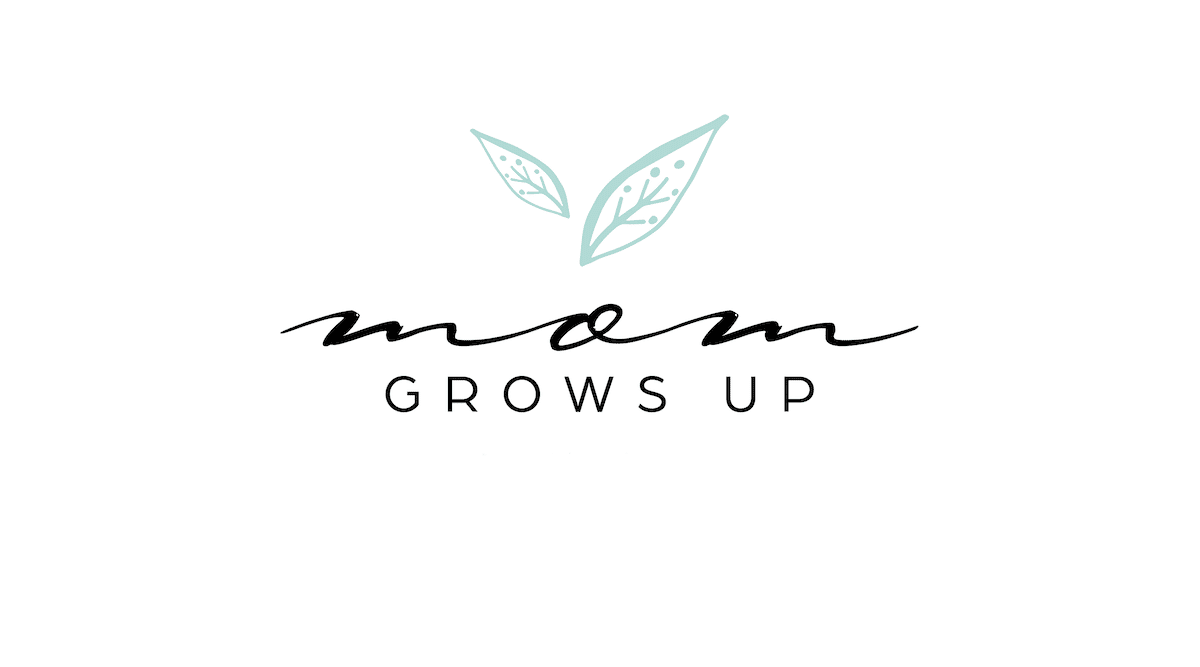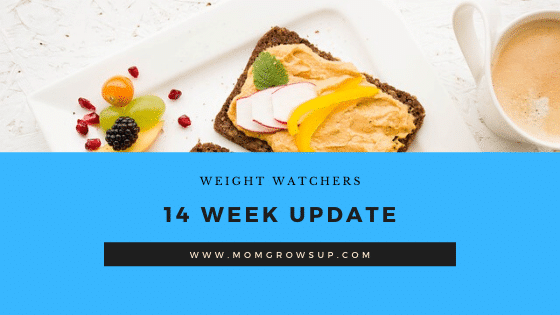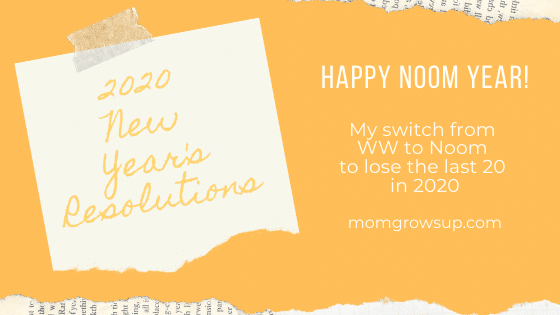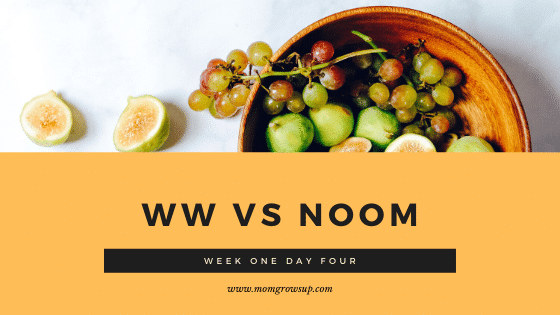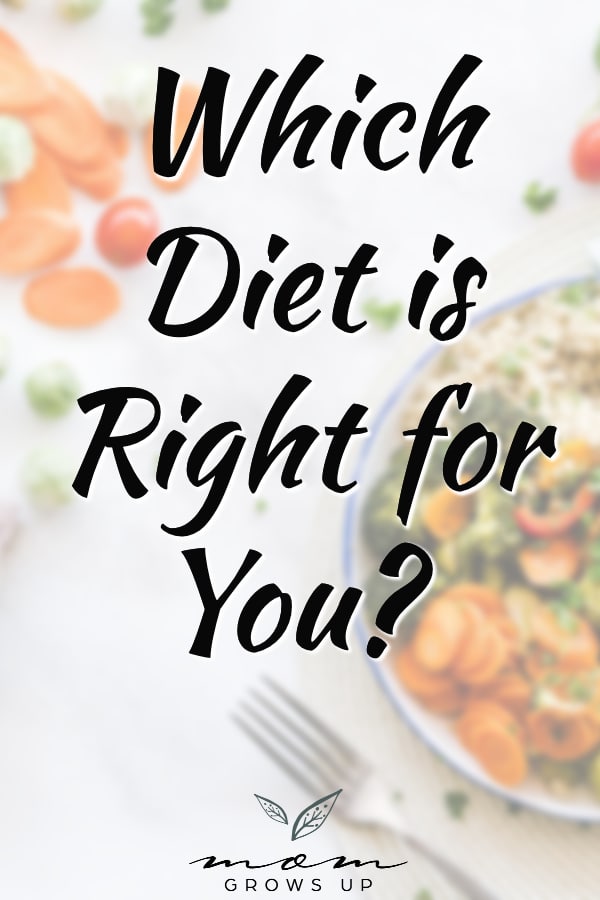13 Tips and Tricks for Long-Term Food Logging Success
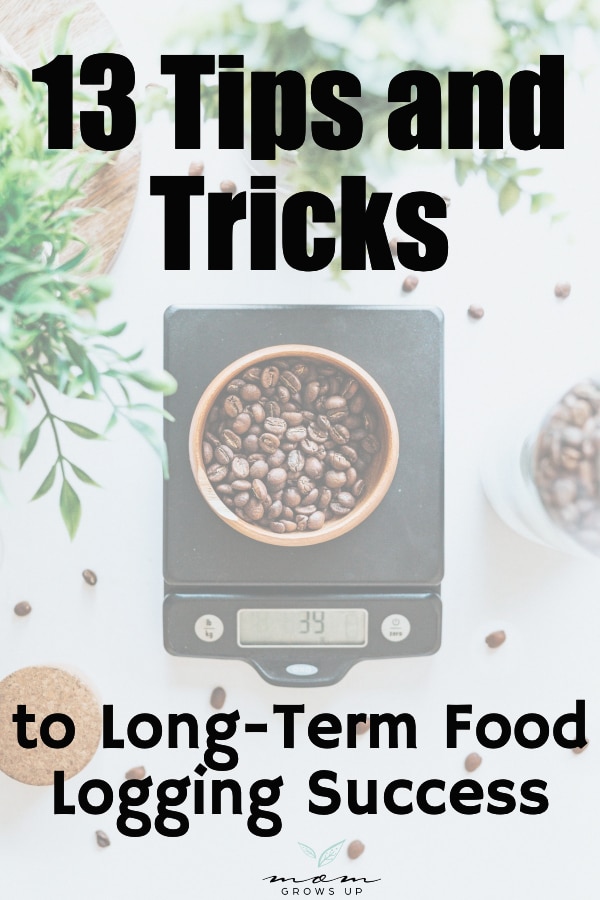
I have tried many, many, methods to lose weight, believe you me, and calorie counting is by far my favorite. It’s given me complete food freedom, and has saved me from the restriction mindset I was stuck in for years. Oh, and it’s been an incredible success. That’s why I’m qualified to pass on these 13 tips and tricks to food logging success!
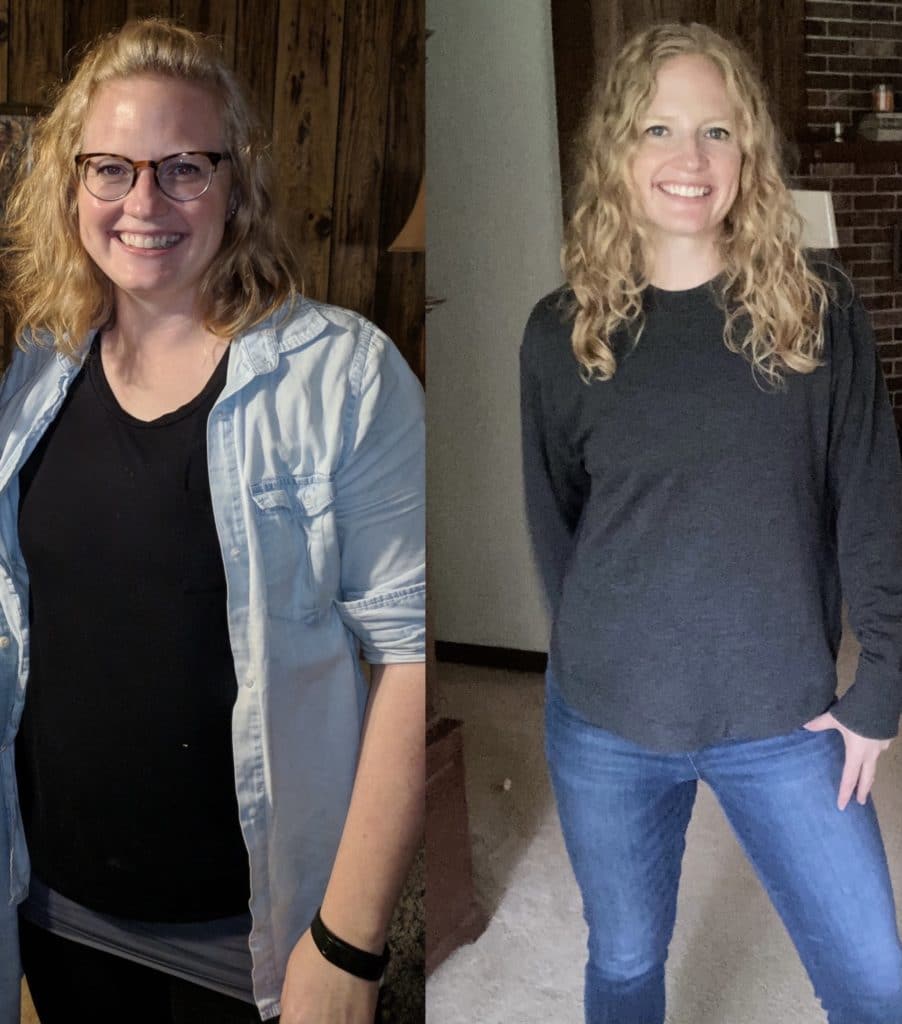
I have had so much success with it, in fact, that I am constantly trying to convince others to try it. My persuasion is usually met by the same limiting belief: “It seems so overwhelming to track and log all my food!” Believe me, I get it. I used to use the same excuse prior to opening my mind to the possibility. Despite being accustomed to tracking from years on WW, I still thought food logging by counting calories sounded overwhelming! It’s understandable that people who have never tracked their food might be opposed to giving such an “extreme” practice a try.
Related Post: Why I Quit Weight Watchers
It’s true that there is some time-consuming work involved with logging and tracking your food. You will have to create and enter recipes into your calorie tracker, do some math to figure out servings and serving sizes, and weigh or measure almost every bite of food that passes your lips. But, as bad as that sounds, it’s really not that bad. Luckily for you, I’m here to provide you with some tips and tricks that will make it a little less daunting and a whole lot easier.
Here are 13 Tips and Tricks for Long-Term Food Logging Success
1. You don’t have to be perfect
This is the most important truth about logging food. You do not have to be perfect. In fact, I guarantee you CAN’T and WON’T be perfect, no matter how hard you try. No matter how perfectly and precisely you measure, the number of calories you consume won’t be EXACTLY what you log.
Variations from one food item to another of the “same” thing are out of your control. For example, one chicken breast may have more or less visible, trimmable fat than another. That will change the calorie amount per gram of chicken. Perfection in tracking, and anything else for that matter, doesn’t exist.
A perfectionist mindset when it comes to tracking food will only make it harder than it has to be. Dieting and weight loss are already challenging – no need to put that kinda pressure on yourself. The struggle to be perfect, and the inevitable failure, will probably just drive you to give up and go off the deep end, headfirst into a bag of chips or carton of ice cream.
Perfection is impossible to attain, so wave goodbye to that notion right here, right now. You can still be killing it and not be perfect, and that’s pretty cool. Wrap your head around that, and calorie counting gets a heck of a lot less scary.
2. Don’t stop tracking when you go over in calories
The secret to weight loss is consistency, but not in the sense you might be thinking. Sure, consistently eating within your deficit calorie range will result in weight loss. That’s true. But what happens when you go over your calorie allotment? Are you just SOL? Is your progress, both past and future, ruined?
If you’re going into this thinking consistency means all the time and you can only lose weight if you’re within your calorie range day in and day out, then you will be pleasantly surprised to hear that couldn’t be further from the truth! You can lose weight even if you go over your calorie “limit” a couple times a month!
And I’m not talking just a few measly calories over, either.
I mean like, massively over. Think hundreds…even thousands. I know this because I’ve lived it. Last month I had 3 days when I went over by 10-25 calories each day, and another 3 days when I went massively over to the tune of 2500, 3300, and 3600 above and beyond my goal number. The other 26 days of the month were at or below my calorie goal.
At the end of the month I added up my entire month’s worth of calories, then divided the number by 31 (the number of days in January) to determine my average daily calorie intake. Get this: it averaged out to a mere 45 calories over my daily calorie allotment. That’s it! That’s the equivalent of 1 and a third servings of baby carrots. Or 1 mini Snickers bar, in case carrots aren’t speaking your language.
Here’s the kicker: I lost 4.1 pounds last month. Had I not kept up with tracking, even on days that, historically, I would have considered complete failures, I wouldn’t have this valuable information. This information keeps me from saying “screw it!” and eating everything in sight for the rest of the week when I go over my calorie goal one day. You must track the good, the bad, and the ugly, so you can see that it all works out in the end. My Life and Fitness Planner will help walk you through this process.
*This post contains Amazon affiliate links. I will receive a small percentage of the sale, at no additional cost to you, if you purchase through my link. Thanks for your support!
3. Measuring soups and gravy.
Soups can be tricky as far as tracking. This is where you must refer back to my first 2 tips – accept that what you eat and what you log will not align perfectly, and know that the imperfection will all come out in the wash. The best you can do is stir it up real good, and don’t cherry pick certain ingredients when dishing out your bowl. You can either track your servings of soup/gravy by weight with a food scale, or by volume with measuring cups.
By weight, you’ll either want to pour your cooked soup or gravy into another bowl that is on a zeroed out scale, or weigh the empty, clean pot you’ll be cooking your food in prior to starting, then weigh the soup-filled pot when it’s done, and subtract the weight of the pot to determine total number of grams of soup. Then, if you want, you can divide that total by the number of servings you intend to get out of your meal to calculate the number of grams or ounces per serving. I rarely do the weight version with soup and gravy because it’s a hassle.
My preferred method is just using measuring cups to figure out how many cups of soup or gravy I made, then counting each cup as 1 serving. I am Mom, and I’m the one cooking and serving the meals. It’s easy for me to tally up the number of cups I dish out as I’m serving them and transferring leftovers into a storage container. Plus, there’s less math this way, which I very much appreciate.
4. Measuring pasta
Again, you can either weigh dry pasta on a food scale prior to cooking, or use a measuring cup. When you’re making pasta for the whole family, but want to make sure you can dish out your own serving accurately once it’s cooked, you can either measure/weigh your own portion dry and cook it separately, or weigh out your serving once it’s cooked (cooked pasta weighs roughly twice as much as dry). You can also put a handful of spaghetti in the “1 cup” measuring cup and call it good. Been there, done that.
5. Weighing your food vs Measuring cups and spoons
I weigh almost all my food on a food scale rather than measuring it with cups and spoons for a couple of reasons. For one, I don’t need more dirty dishes in my life, and a food scale really cuts back on all the extra dirtied cups and spoons cluttering up my sink and dishwasher.
But more importantly, I want to get every last morsel and crumb of food I’m owed. This may sound intense…because it is! But when I’m tracking calories, I don’t want to lose that gram or two of food that will undoubtedly be left behind on a measuring utensil.
Plus, and this is a big one, you actually get more chips, or more cereal, when you weigh them out versus counting chips or measuring cereal in cups. Eating more food is what I’m all about (as my Kids can attest to). It’s amazing…not only will your logged calories be more accurate, but you can eat more by weighing your food.
If, despite learning you can eat more with a food scale, decide you still want to go the cup and spoons route here’s a tip: you’ll need 3 sets cups and spoons. They just get dirty so fast and are never clean when you need one!
6. Homemade food
I get sick of entering recipes. It can be tedious and frustrating entering, searching, and verifying every single ingredient. I know MFP has the nifty little copy and paste feature, but it still requires time and effort on my part, and sometimes I just need a break.
In those instances I just search the tracker I’m using (I use Noom, unless I want to use the copy and paste recipe feature from MFP and then manually log the calories in Noom. I legit do that at times because recipes are the worst part of tracking for me) for the food I’m logging, choose a generic entry, and enter how much I’m eating by weight.
For example, I bake bread from scratch. Instead of creating my own sourdough bread recipe in Noom, I simply search for “sourdough bread,” pick one that seems likely similar in calories with serving size listed in grams, and log the weight of bread I eat. I do this often, with a lot of different foods, and guess what? I still lose weight. Refer again to Tip #1 for clarification on how this is possible.
Sidenote: Though I use Noom‘s tracker, I don’t use their recommended calories. Even on the slowest weight loss setting, I found the numbers to be too low. I figured up my own calories and just ignore Noom when it says “over” calorie for the day. If you want me to calculate your calories too, join Mom’s Kids– the weight loss community where you eat more food and have more fun.
7. Take a picture
As a mom of three, sometimes mealtimes are busy and food gets scarfed down between errands. For this reason, I simply snap a picture of what I eat prior to feasting, so I can refer back to it for logging purposes later in the day.
This way I have photographic evidence to 1) remind me to log it, and 2) gauge my portion size and guesstimate numbers if I need to. I don’t do this often, but it is a real lifesaver in a pinch – especially for someone like yours truly, who has a terrible memory. Logging later is better than not logging at all, that’s what I always say.
8. Local restaurants
I used to shy away from eating at local, non-chain restaurants because they were “untrackable!” I’ve missed out on so much delicious food, and the opportunity to support small businesses, because of this totally unnecessary diet-related fear. Not anymore! You should always first live your life, then lose weight. This has been my philosophy since I broke free from fad diets.
Now I go to non-chain, family owned, mom-and-pop, small business eateries, and I allow myself to fully enjoy the experience. For logging purposes, I simply look up a few chain restaurants that serve similar foods and research the calories. Then I make an educated guess based on the menu description and flavors of the dish. Honestly, it’s kinda fun. Like a little culinary murder mystery that I enjoy solving.
9. How I design a menu to keep on track
When I meal plan for the week, I always include a soup, a salad, and one low-calorie main dish. Designing my menu this way helps me have the flexibility I need to eat unplanned higher calorie meals on occasion throughout the week.
Having these light options made, or at least having the ingredients to throw together, gives me the opportunity to salvage my day, so to speak – if I’ve made higher calorie choices earlier in the day. This makes it easy to balance it out with a healthy, filling, low-calorie meal that evening.
Soup is a no-brainer because it fills you up for hardly any calories. Salad is a must because they are loaded with filling, nutritious veggies, and are a nice and refreshing dinner on days when I might have chosen to have a burger and fries from a fast food restaurant for lunch. It always feels so nice to follow up a deep fried lunch with a light, healthy salad. Finally, a low-calorie meal option that isn’t soup or salad is great to have around when I just don’t feel like eating soup or salad.
This might sound silly, but once I started incorporating each of these three simple meal options into my week, I started consistently eating within my calorie budget much more often. It’s like having Plans B, C, and D built-in for when Plan A doesn’t work out – which seems to happen a LOT. I’ll do a recipe round-up of my favorite soups, salads, and low-calorie meals soon!
10. Ordering out
When dining out and ordering off a menu you are unfamiliar with, I would suggest choosing a soup over a salad, if you’re trying to decide between the two. Salads at restaurants are often stuffed, topped, and drenched with as many calories (or more!) than a deep fat fried, smothered entree.
If you are craving salad, always get the dressing on the side so you can get a better estimate of the number of tablespoons of dressings you used when logging (especially if you are at a restaurant without nutrition facts). Protip: try dipping your fork in it prior to stabbing food with it to use less of the dressing while still getting the flavor in every bite!
Ordering grilled over fried is obviously a healthier choice but, personally, I never want to eat grilled food when I go out to eat. So I totally understand if you order to satisfy cravings. Just make an attempt to budget it into your day, and enjoy! Sometimes I’ll skip breakfast and eat lower calorie meals and snacks the rest of the day, like those listed under Tip #9.
11. How I estimate bites, licks, and tastes
As a mom, I’m making meals for my kids, and clearing their dishes, all day long. This used to mean I’d be having a taste of this, and a bite of that, multiple times every day. It’s not a big deal if it’s just one little bite, but I have 3 kids who eat 3 meals and lots of snacks each day – my Bites, Licks, and Tastes quickly added up to hundreds of mindless calories!
To stop this bad habit, I started tracking the calories in every single bite. Each one fell into one of three “levels” of calories, which I made up myself. Something healthy was assigned 10-15 calories per bite. Every normal-sized bite of a junky kid food like mac and cheese, for example, was estimated at 25 calories. Big and/or decadent bites bites of comfort food or sweets would count for 50-75 calories, depending on what it was.
For example, if my husband was eating creamy pasta and I took a normal-sized bite to taste it, I’d give it 50 calories. This practice broke the bite/lick/taste habit really quickly because, just as I suspected, they added up…significantly. Actually, they added up to so many calories they were throwing me right out of a calorie deficit and right into maintenance!
Give tracking those bites, tastes, and licks a try and I bet you’ll think twice next time before putting that last bite of your kid’s cold chicken nugget into your mouth. Because it’s almost always not worth it!
12. Measuring a bite of peanut butter
If you just want a spoonful of peanut butter, marshmallow fluff, or cookie butter do it like this. Put the entire, open jar on the scale, zero it out, take your spoonful out, and track the negative weight shown on the scale (just take off the minus sign). So if the scale reads, “-13g,” log 13 grams of peanut butter in your tracker.
Save yourself a dirty dish, don’t fret about not having a clean tablespoon handy, dish out as little or as much as you’d like, and feel free to lick the spoon! Bonus: once the spoon is licked you’ll be less likely to go back for seconds!
13. Creative ways of tracking
From time to time, and for certain foods, I feel like I can more accurately log it when I break it down into its components. For example, a friend made a complicated homemade kolache. It was nearly impossible to log the recipe – or maybe I was too lazy to…whatever.
Anyway, I looked up generic kolaches in my tracking app, but none of the entries seemed to have the right ballpark calorie number. So I ended up logging the components of the kolache individually – yeast rolls (I just said 2 because it was the size of two normal yeast rolls), blueberry jelly (2 tbsp), etc -and called it good. Close enough is close enough, and will still yield impressive weight loss progress and results.
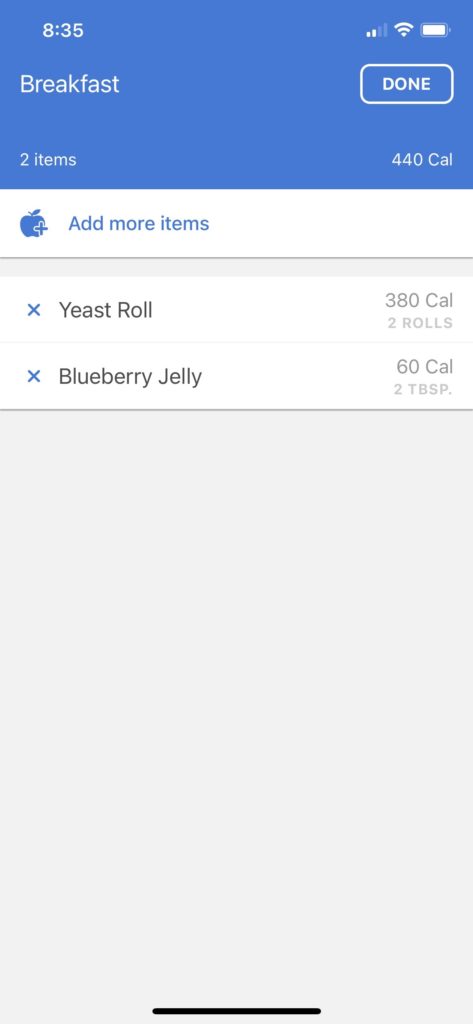
See? It’s Not So Bad
I do things my way with calorie tracking. With time I’ve learned to lighten up, loosen up, and just do my best. I lost 20 pounds last year by following and practicing these very tips and tricks, and they’re continuing to work while dropping the 8 pounds I gained (whoopsie) celebrating the never-ending holidays, during which I didn’t consistently track much at all. FYI: I only need to lose 2 more pounds to be back to pre-holiday weight…I need you to know that.
These tips are how I have managed to stick with calorie counting for almost an entire year. If I were strict and obsessed with perfection, I know I would have quit and would still be 20 pounds heavier.
Counting calories works, it’s oddly and gloriously freeing, and it’s fun. Why not at least give it a try? Commit to tracking and logging everything, to the best of your ability, enjoy the ride, and you will lose weight.
I encourage you to use some of my methods above and find your own tips and tricks on your way to long-term calorie counting success! Let me know if you have a tip of your own that I missed. Follow me on Patreon to learn more about my life, and join Mom’s kids if you’d like to be part of an awesome weight loss community! And don’t forget to get my awesome Life and Fitness Planner here.
Other Posts You May Be Interested In:
I Increased My Calories and Here’s What Happened
7 Tips for Dieting Success
Why I Weight Everyday, and Why Maybe You Should Too
What I Ate This Year to Lose 20 Pounds
The Unexpected Surprise at the End of My Weight Loss Journey
